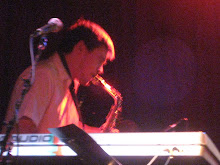
is traditional characters.
As you may know, Taiwan uses Traditional characters where as Mainland China switched to Simplified sometime after the Communist revolution. What many people may not realize is that the Nationalist (pre-Communist) government also planned to overhaul the country's writing system, even considering replacing it with a romanized alphabet (!!!!!!!) but trashed the idea. Anyway, since the plan got interrupted, the KMT brought Traditional Chinese to Taiwan, outlawing the speaking / writing of indigenous languages, and now today everything here is in Traditional characters.
Dirty history aside, I think traditional characters (fantizi) are awesome.
Whereas many pro-fantizi arguments include "fantizi preserves the original radicals and thus the meaning of the characters," which is true, I don't think that this is an advantage in itself. Anybody who's studied Chinese characters will know that the radicals of an unknown character are almost useless in divining its meaning. A prime example: 杯 (bei1, cup) which is composed of the wood radical and the character for "no." None of this points to "cup," except maybe as alluded to in a 115 dialogue, (horribly scraped up from memory)
A: What about bei1? It's got wood and no.
B: There's no wood in a cup, so it must be so!
A: Now I understand! Learning radicals really is the best way to study characters!
One of the methods of simplifying characters involves cutting out a lot of radicals and replacing them with phonetic components, which, if not helping you guess the meaning of a character, at least help you guess its pronounciation. However, I feel that this leads to a great many near-identical characters. Fantizi, by preserving more original radicals, leaves more things to memorize but less chances to mix things up. I think I can demonstrate better with an example:
Here are three fantizi: chong1 沖 ... zhong1 鐘 ... and zhong3 種
Here are the equivalent jiantizi: 沖 ... 钟 ... 种
note that jiantizi uses 中 as the phonetic radical in each case, whereas fantizi has 3 separate ones (that all have the same phonetic content). Yes, it's more to memorize, but I feel like there's less stuff to get confused, in a language that features these gems: 于干千午牛 (the first two being jiantizi).
On top of that, there's always the good argument that fantizi are just prettier to look at. There are a few exceptions, including the recurrent 麼 / 么 (me5, a common particle in question words) which looks like a scrunched-up face, but for the most part there's some really sweet-looking characters (or more precisely, radicals) that jiantizi users are completely missing.
Among them:
-the bones radical "gu3" 骨 of 身體 ( 身体) (shen1 ti3, health) fame;
-the tiger radical "hu1" 虍 as seen in such awesome words such as 戲劇 (戏剧) (xi4 ju4, drama);
-the dragon radical "long2" 龍 (龙) which needs no explanation.
Yes, fantizi take longer to write. But let's not kid ourselves: writing chinese in any fashion isn't time-efficient. What we all end up doing is scrawling characters down, ignoring stroke order and sharpened corners (occasionally my 口s end up just being 1-stroke zeroes), the result of which is both take about an equivalent time to write and are equally as messy. However, given the time to carefully write out a character, the fantizi writer will emerge with a more beautiful product.
Finally, I feel that more complicated characters are easier to remember how to write. Truly the worst ones are those middle-of-the-road characters like 舒服 which I might have forgotten after 20+ attempts at "learning it for good." But I've always found that the scariest, most murderous characters are the ones that I can reliably pop out, much like maybe the only word I remember from Spanish is "triturador de desperdicios" (garbage disposal). Case in point: 繡.
I will be honest and say that learning fantizi probably composed the majority of my desire to come to Taiwan and study Chinese. Last night I conversed with a Light Fellow from Beijing over AIM, using jiantizi, and in order to converse I had to write certain characters into the online Chinese dictionary and copy out their simplified version. It really showed me how many characters are gutted and transformed into factory-produced looking things. I don't want to come across like a pretentious artiste ... I do plan on learning the simplified versions of my vocabulary, and for jotting down stuff really quickly, using 几 rather than 幾 is a blessing. But for any of my personal correspondence and stuff like that, I'll be using Fantizi. If nothing else, it's a way of keeping Chinese history alive.

4 comments:
hmmm, it was interesting reading your thoughts. also amusing... loved the chinese 115 dialogue. also the chinese "gems."
did i mention that i remember approximately 7 chinese charaters? pictographs, mostly. long2 is one of them. i don't remember how to write your name, stephen.
you're right, complicated is easier to remember (but that's only when simpler things DO exist. so maybe fantizi would be harder if jiantizi did NOT exist).
i just remembered that the only thing i remember in german is: "herzlichen gluckwunch zum geburtztag" (happy birthday).
and in english, zygophalacious.
I'm newbie here, I hope to get friends at this forum
[url=http://dinnernow.codeplex.com/Thread/View.aspx?ThreadId=20333]generic viagra safety and reliability
[/url]
[url=http://dinnernow.codeplex.com/Thread/View.aspx?ThreadId=203336]generic cialis 1.00 per pill
[/url]
[url=http://www.pyzam.com/profile/3335617]when will generic viagra be available
[/url]
[url=http://www.pyzam.com/profile/3335625]generic cialis overnight delivery
[/url]
Post a Comment